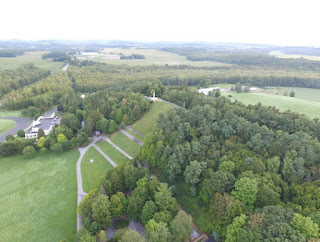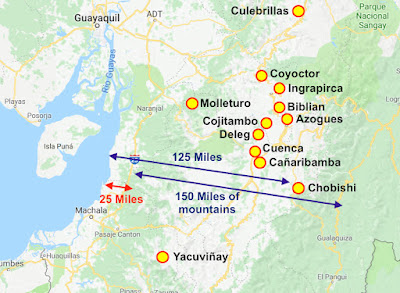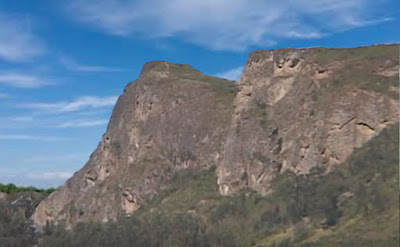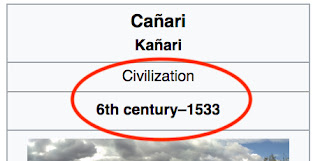Continuing with more of this reader’s comments and our responses regarding his disagreement with our article on the events surrounding Frederick G. Williams and what Joseph Smith did and did not testify about. As before, the reader’s comments are in italics following (•), and our response is in regular type:
•“F.G. Williams obviously looked at a map”
Response: Let’s be realistic here. There were no detailed maps of the central western coast of south America in 1840. In fact, few Americans knew anything about central to northern Chile, the Bay of Coquimbo was unknown, and La Serena was a very small, sleepy village. An extensive and ugly war (War of Confederation between Peru/Bolivia [one country at the time] and Chile and Peruvian dissidents) was raging in that area and had been for some time and would for some time later (the Battle of Yungay in 1839 officially ended the war, but the fighting continued for some time, which eventually led to the separation of Peru and Bolivia into separate countries) and Americans shied away from the west coast of South America. If you can find a detailed map showing coves, bays, and possible landing sites of that area in 1840 that shows where a sailing ship could have set in, we would love to see it, even buy it from you, though no such map has ever been known to exist.
A typical, undetailed map of South America available in 1835 to 1845.
Note the lack of definition even on the (left) magnified map section—a person
could point a finger somewhere, but landing sites along that coast are rare
with most of the coastline cliffs right down to the water
•“and gave his opinion on where Lehi's family might have landed in the new world”
response: Unlike those who just figure they know things out of hand, Williams knew enough about the sea, and as pilot (navigator) of ships on Lake Erie, that seas have current flows and patterns, and that in a sailing ship, you need the wind and currents to get from Point A to Point B (unlike today where tacking has reached a fine art of capability), and would not have just placed a finger down on a coast line thousands of miles away and said they landed there. It would be like you being shown a map of the moon and deciding that if you were flying a rocket ship to the moon, where you would land. It took NASA hundreds of hours to decide where to land the Apollo missions because landing a lunar lander from space on the moon is a dangerous thing, and so would be trying to land a ship in 600 B.C. on an unknown coast without a knowledge of shoals, reefs, rocks, etc. The moon landing sites, by the way, were chosen from earlier flyby missions and had to meet four criteria: 1) clear of major obstacles, have an east-west ellipse 4 to 5 miles long and 1 to 2 miles wide; 2) 10º north-south of equator to satisfy free return trajectory; 3) spaced across the face of the moon to accommodate a maximum number of launch opportunities; and 4) within 45º west of the north-south centerline longitude restraint. What average citizen in the late 1960s had any idea of this? Would Williams have known where a ship could have landed in South America, or what the physical conditions of any site along the coast would be to allow for a safe landing—a coast he had never seen?
•“however, Joseph Smith testified, by command from God, to the Rochester Observer, in 1833, exactly what the Book of Mormon is.”
Response: The letter you mentioned was written on January 4, 1833, and addressed to N.E. Seaton (Noah C. Saxton), who was at the time the editor of the “American Revivalist and Rochester Observer,” a weekly newspaper that began in 1827 and ceased in 1833, with its masthead carrying the caption: “Dedicated to the interests of Zion generally, and especially to revivals of religion.”
However, the command to Joseph was not about “what the Book of Mormon is,” other than a very brief explanation about it 1) along with the Bible, describing “the only way man can enter into the Celestial Kingdom,” and 2) a brief comment about the forefathers of the western tribes, how the plates were found and translated, about Joseph sold into Egypt, and that the land was a promised land. The main body of the letter was about “what he considered to be the will of God for the world, including repentance and baptism.” In fact, as has been written of this letter: “Having been appointed by the Lord to initiate the work of establishing a new dispensation of the gospel and direct the proclamation of its saving message, Joseph Smith stepped forth in his prophetic calling to explain the nature of that work and to forewarn the people and the nation of impending judgments. In so doing, he marked out the way by which true peace could be established among men and by which the judgments he foresaw could be averted.”
In fact, Joseph Smith began the initial letter by observing that he had for some time been carefully reviewing the state of things throughout the land and had looked at the situation "with feelings of the most painful anxiety…while upon one hand I behold the manifest withdrawal of God’s Holy Spirit, and the veil of stupidity which seems to be drawn over the hearts of people; on the other hand, I behold the judgments of God that have swept, and are still sweeping, hundreds and thousands of our race (and I fear unprepared) down to the shades of death.” It was, without doubt, a worldly message of events that were to unfold and the fate of people and the world in those coming events. In his letter, Joseph made it clear that the withdrawal of enlightening spiritual powers from men in general, along with the challenge of such baneful forces as were being made manifest, would ultimately result in major judgments upon the world, unless proper remedies were applied. Also, in his letter, Joseph stated that “Christ established a system among the ancient Nephites of the Western Hemisphere” (3 Nephi 11:13-40). The article appeared on Saturday, February 2, 1833, but was only about one-third of the letter content Joseph sent to Saxton. Joseph wrote back on February 12, urging the printing of the entire letter; however, Saxton did not change his mind and the subject was never addressed again.
•“Joseph said it is a record of the ancient inhabitants of this land which descendants are the western tribes of Indians.”
Response: Joseph said in the letter you refer to that “The Book of Mormon is a record of the forefathers of our western tribes of Indians,” and in referring to the record (Book of Mormon) that “By it we learn that our western tribes of Indians are descendants from that Joseph which was sold into Egypt, and that the land of America is a promised land unto them, and unto it all the tribes of Israel will come, with as many of the Gentiles as shall comply with the requisitions of the new covenant” (History of the Church I, p315).
A
map showing the division of the American Indians in their various cultural
locations. The Plains Indians were the main area of Lamanites in the west from
the early Church and Joseph’s main area of interest because of their access and
nearness; however, Lehi’s descendants were also located in various other areas,
not just the Western Plains, including those areas to the West and East of the
Plains
It should be noted that none of this suggests any landing site, or any lands the Nephites occupied during the time of the record in the Book of Mormon, or any connection to the Jaredites, who would not have been the progenitors of the American Indians. After all, the Nephites and Lamanites that went north in Hagoth’s ships could have settled in Central America and later North America. This should be clearly understood when we know tha Lamanite descendants occupied the entire North and South American continents at the time of the Spanish invasion.
•“That letter which I wrote to you for publication. I wrote by the command of God.”
Response: You make it sound like the command of the Lord was about telling the newspaper who the Book of Mormon people were and their connection to the land of the U.S. However, the command was quite different. Quoting directly from the letter’s ending paragraph, “Therefore I declare unto you the warning which the lord has commanded me to declare unto this generation, remembering that the eyes of my maker are upon me and that to him I am accountable for every word I say wishing nothing worse to my fellow men then their eternal salvation therefore fear God, and give glory to him for the hour of his Judgment is come, Repent ye, Repent, ye and embrace the everlasting Covenant and flee to Zion before the overflowing scourge overtake you, For there are those now living upon the earth whose eyes shall not be closed in death until they see all these things which I have spoken fulfilled” (spelling corrected). This is the only use of the word “command” or “commanded” in the entire letter.
Obviously, the Lord wanted this message out to the people of the time and commissioned Joseph to write the letter and send it for publication.
The intent of Joseph’s letter, what the Lord commanded him to write and
send to the Observer, was a warning about the pending dangers hovering over the
eastern country due to the build-up of anger before the Civil War
(See the next post, “Answering a Heartland Theorist’s Erroneous Claims – Part III,” on more of this reader’s comments and our responses)
































